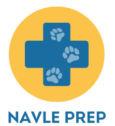Looking for schools in a specific city? Check out our lists of NAVLE in Sioux Falls and Rapid City.
So, you want to know how to become a veterinarian in South Dakota.
- Understand the role of veterinarians: Learn what veterinarians do in the community.
- Educational path: Discover the required courses and degrees.
- Certification and licensure: Get insights into necessary exams and state requirements.
Your dream of becoming a veterinarian in South Dakota starts here.
- Introduction to Veterinary Medicine
- Educational Requirements
- Accredited Veterinary Schools
- Certification
- Licensing and Certification
- Continuing Education Requirements
- Job Opportunities for Veterinarians in South Dakota
- Salary and Job Outlook
- Networking and Professional Organizations
- Specializations in Veterinary Medicine
- Tips for Aspiring Veterinarians
- Looking for Veterinarian Information On States Bordering South Dakota?
- Conclusion
Introduction to Veterinary Medicine
Veterinarians play a crucial role in maintaining the health of not only pets but also livestock and wildlife. In a state like South Dakota, where agriculture forms a vital part of the economy, veterinarians ensure the well-being of farm animals and contribute to food safety. The path to becoming a veterinarian in South Dakota involves rigorous academic training and practical experience. To embark on this fulfilling career, you’ll need to understand the various steps and requirements involved, from education to licensure.
Educational Requirements
To prepare for a career as a veterinarian in South Dakota, you’ll need to complete several educational milestones. Your journey begins in high school, where focusing on relevant science courses will lay a strong foundation for future studies.
High School Preparation
In high school, prioritize subjects like biology, chemistry, and physics. These courses will not only provide a solid groundwork but also make your college application more competitive. Consider enrolling in Advanced Placement (AP) classes, which can give you an edge.
- Biology and Chemistry: Gain a thorough understanding of living organisms and chemical processes.
- Physics: Learn the principles that will later be applied in medical studies.
- Extracurricular Activities: Join science clubs or volunteer at animal shelters to gain relevant experience.
Undergraduate Studies
After high school, you’ll need to pursue a bachelor’s degree. While there’s no mandatory major, degrees in biological sciences, animal science, or a related field are highly recommended. Key courses include:
- Biochemistry: Understand the chemical processes within living organisms.
- Genetics: Learn about hereditary traits and genetic diseases.
- Microbiology: Study microorganisms and how they affect animal health.
- Animal Nutrition: Gain insights into the dietary needs of various species.
Practical experience is vital, so seek internships or volunteer opportunities at veterinary clinics, farms, or animal shelters. This hands-on experience will enrich your understanding and make your application to veterinary schools more competitive.
Accredited Veterinary Schools
In South Dakota, you won’t find an accredited veterinary college; however, several nearby institutions provide excellent options for aspiring veterinarians. Attending a vet school accredited by the American Veterinary Medical Association (AVMA) is essential for licensure.
Nearby Veterinary Schools
South Dakota residents often attend veterinary programs in neighboring states. Notable options include:
- Iowa State University College of Veterinary Medicine: Known for its comprehensive curriculum and hands-on training.
- University of Minnesota College of Veterinary Medicine: Offers extensive research opportunities and diverse clinical experiences.
Admission Prerequisites
Admission to veterinary school is highly competitive. To increase your chances, ensure you meet all the prerequisites, which generally include:
- Strong GPA: Particularly in science courses.
- Prerequisite Coursework: Complete required courses such as organic chemistry, biochemistry, and animal science.
- Relevant Experience: Accumulate hours of work experience in veterinary settings.
- GRE Scores: Some schools require the Graduate Record Examination (GRE) scores.
Each school may have unique requirements, so thoroughly research and prepare to meet the specific criteria of the institutions you’re interested in.
Certification
Certification is a critical step on the journey to becoming a veterinarian. After earning your degree from an AVMA-accredited institution, you’ll need to pass the North American Veterinary Licensing Examination (NAVLE).
North American Veterinary Licensing Examination (NAVLE)
The NAVLE assesses your knowledge and skills necessary for veterinary practice. It covers a broad spectrum of veterinary medicine, including diagnostics, treatment, and management of animal health. To prepare for the NAVLE:
- Study Relevant Material: Focus on subjects covered during veterinary school.
- Take Practice Exams: Familiarize yourself with the exam format and question types.
- Enroll in Prep Courses: Consider joining review courses to strengthen your understanding.
Once you’ve passed the NAVLE, you’re eligible to apply for state licensure.
Licensing and Certification
After completing veterinary school and passing your NAVLE, you must obtain licensure to practice in South Dakota.
South Dakota Board of Veterinary Medical Examiners
The South Dakota Board of Veterinary Medical Examiners is responsible for issuing and regulating veterinary licenses in the state. To apply for licensure, you’ll need to:
- Submit an Application: Complete the required forms and provide necessary documentation.
- Provide Proof of Education: Include transcripts from your veterinary school.
- Pass a Jurisprudence Exam: This state-specific exam tests your knowledge of South Dakota veterinary laws and regulations.
- Pay Required Fees: Ensure all application and examination fees are paid.
Staying up-to-date with South Dakota’s licensure requirements is essential, as regulations may change over time.
By following these steps and meeting the necessary requirements, you can embark on a rewarding veterinary career in South Dakota. Internalize these processes, prepare diligently, and you’ll find yourself well-equipped to succeed.
Continuing Education Requirements
After obtaining your license, maintaining it requires an ongoing commitment to professional development.
Mandatory Continuing Education (CE)
In South Dakota, licensed veterinarians must complete continuing education (CE) requirements to ensure they stay current with advancements in the field. The South Dakota Board of Veterinary Medical Examiners mandates:
- Minimum Hours: Veterinarians must complete a set number of CE hours during each licensing period. Verify the exact hours required on the Board’s website.
- Approved Programs: CE credits must come from approved sources, such as veterinary conferences, workshops, online courses, and industry seminars.
Benefits of Continuing Education
Engaging in CE is not just a regulatory requirement; it also provides significant benefits:
- Up-to-Date Knowledge: You stay informed about the latest medical treatments and technologies.
- Skill Enhancement: Improving your skills can lead to better patient outcomes.
- Networking Opportunities: CE events often offer networking opportunities with fellow professionals and experts in the field.
- Career Advancement: Specialized training can open doors to new career opportunities and specializations.
To find CE opportunities, consider joining professional organizations such as the American Veterinary Medical Association (AVMA) and the South Dakota Veterinary Medical Association (SDVMA).
Job Opportunities for Veterinarians in South Dakota
Private Practice
One of the most common career paths for veterinarians is private practice:
- Small Animal Clinics: Focus on pet care, including preventative medicine, surgeries, and emergency services.
- Large Animal Practices: Cater to livestock, offering services like herd health management, reproductive services, and disease control.
Public Health Roles
Veterinarians also have opportunities in public health:
- Food Safety: Work with regulatory agencies to ensure the safety of the food supply.
- Disease Control: Monitor and manage zoonotic diseases, protecting both animal and human populations.
Research and Academia
Veterinarians interested in research and teaching can consider careers in academia:
- University Faculty: Teach veterinary students while conducting research to advance medical knowledge.
- Industrial Research: Collaborate with pharmaceutical companies to develop new medications and treatments.
Wildlife and Conservation
In South Dakota, veterinarians can work in wildlife conservation:
- Zoo and Wildlife Medicine: Provide medical care for exotic and endangered species in zoos and wildlife sanctuaries.
- Conservation Projects: Participate in efforts to preserve native species and their habitats.
Salary and Job Outlook
Salary Expectations
Veterinarians in South Dakota earn competitive salaries:
- Entry-Level: Newly licensed veterinarians might start with salaries ranging from $60,000 to $70,000 annually.
- Experienced Veterinarians: With several years of experience, salaries can increase to $90,000 or more, particularly for those in specialized fields.
These figures can vary based on factors such as location, type of practice, and individual expertise.
Job Market Outlook
The demand for veterinarians is expected to grow:
- Pet Ownership: Increasing pet ownership rates fuel demand for veterinary services.
- Agricultural Needs: The state’s robust agricultural sector requires veterinarians to ensure livestock health and productivity.
- Growth Projections: According to industry projections, veterinary employment is anticipated to grow faster than the average for all professions.
Networking and Professional Organizations
Joining professional organizations can greatly benefit your career:
Advantages of Networking
Networking offers numerous advantages:
- Knowledge Sharing: Learning from peers enhances your understanding of trends and best practices.
- Career Opportunities: Many job opportunities arise through professional connections.
- Mentorship: Seasoned professionals can provide guidance and mentorship.
Key Professional Organizations
Several organizations support veterinarians:
- South Dakota Veterinary Medical Association (SDVMA): Offers resources, advocacy, and educational opportunities for veterinarians in the state.
- American Veterinary Medical Association (AVMA): Provides a wealth of resources, including CE opportunities, professional development, and networking events.
- Specialty Groups: Consider joining organizations related to your specific field of interest, such as the American Association of Equine Practitioners (AAEP) or the American Animal Hospital Association (AAHA).
Specializations in Veterinary Medicine
Pursuing a specialization can elevate your career:
Common Specializations
Several common specializations include:
- Small Animal Surgery: Focus on advanced surgical procedures for pets.
- Internal Medicine: Diagnose and treat complex medical conditions.
- Dermatology: Specialize in skin conditions and allergies.
- Equine Practice: Provide care specifically for horses.
Path to Specialization
To specialize, follow these steps:
- Residency Program: Complete a residency in your chosen specialization, typically lasting 3-5 years.
- Board Certification: Pass a board exam to become certified in your specialty.
This additional training opens doors to advanced practice opportunities and can significantly increase earning potential.
Tips for Aspiring Veterinarians
Gaining Experience
Hands-on experience is crucial:
- Volunteering: Volunteer at veterinary clinics, animal shelters, or farms to build experience and understanding of the field.
- Internships: Seek internships during your undergraduate studies to gain real-world exposure.
Seeking Mentorship
Finding a mentor can guide you through your journey:
- Identify Mentors: Reach out to experienced veterinarians who can provide guidance and support.
- Mentorship Programs: Join mentorship programs offered by organizations like the AVMA or SDVMA.
Academic Excellence
Excel academically to prepare for veterinary school:
- Focus on Science Courses: Prioritize high grades in biology, chemistry, and physics.
- Prepare for Exams: Study for and perform well on required exams like the GRE.
Extracurricular Involvement
Participate in relevant extracurricular activities:
- Pre-Veterinary Clubs: Join clubs that focus on veterinary medicine to network and learn.
- Workshops and Conferences: Attend workshops and conferences to gain additional knowledge and make industry connections.
Looking for Veterinarian Information On States Bordering South Dakota?
In addition to South Dakota, we suggest looking for schools in nearby states.
- How to Become A Veterinarian in North Dakota
- How to Become A Veterinarian in Minnesota
- How to Become A Veterinarian in Iowa
- How to Become A Veterinarian in Nebraska
- How to Become A Veterinarian in Wyoming
Conclusion
To become a veterinarian in South Dakota, you need dedication and commitment. By pursuing the right educational path, gaining hands-on experience, and engaging in continuous learning, you can build a successful and rewarding career. Whether you aim to work in private practice, public health, research, or wildlife conservation, each step in your journey brings you closer to making a meaningful impact on animal health and public well-being. If you’re ready to start this exciting journey, take the first step by exploring veterinary schools and connecting with professional associations. Your future in veterinary medicine awaits.

